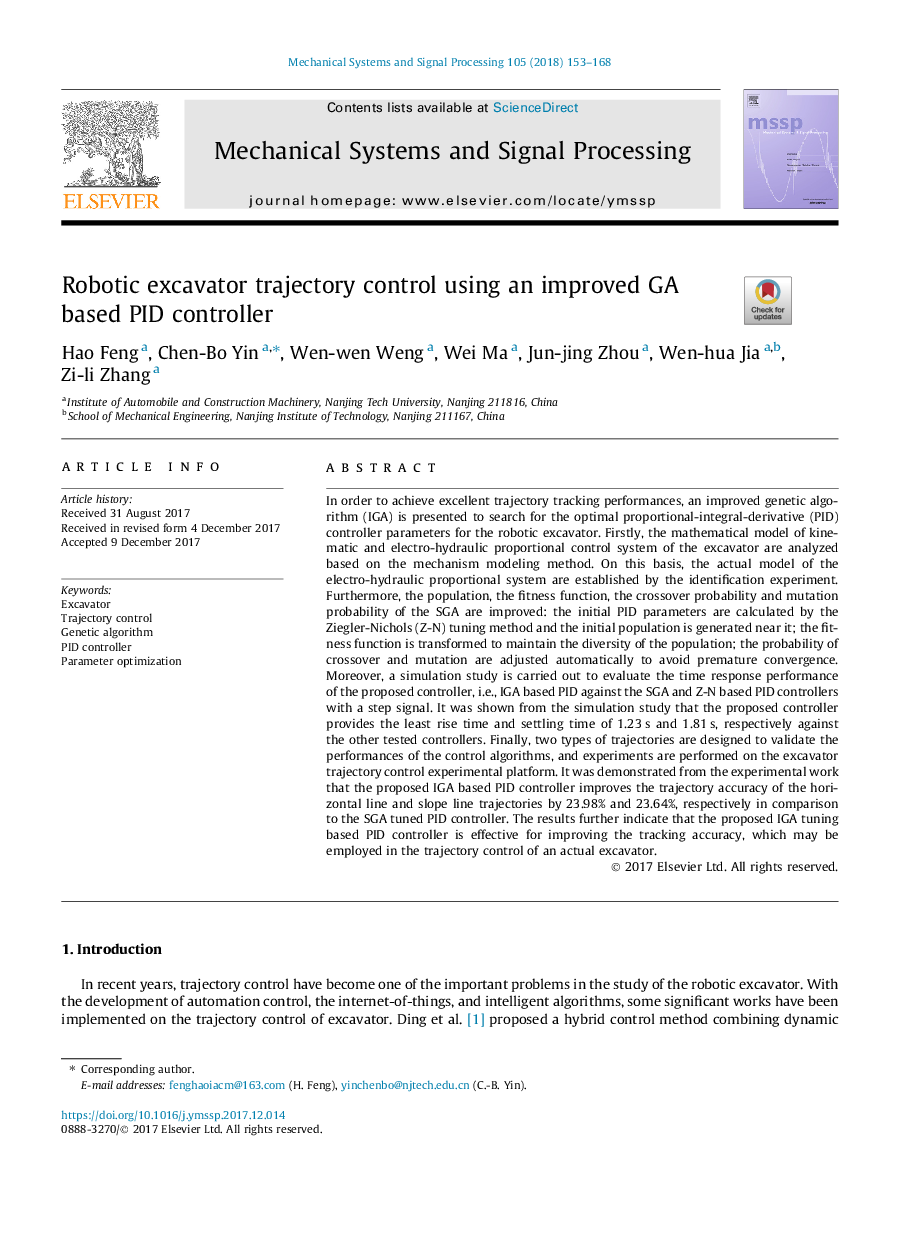| Article ID | Journal | Published Year | Pages | File Type |
|---|---|---|---|---|
| 6954419 | Mechanical Systems and Signal Processing | 2018 | 16 Pages |
Abstract
In order to achieve excellent trajectory tracking performances, an improved genetic algorithm (IGA) is presented to search for the optimal proportional-integral-derivative (PID) controller parameters for the robotic excavator. Firstly, the mathematical model of kinematic and electro-hydraulic proportional control system of the excavator are analyzed based on the mechanism modeling method. On this basis, the actual model of the electro-hydraulic proportional system are established by the identification experiment. Furthermore, the population, the fitness function, the crossover probability and mutation probability of the SGA are improved: the initial PID parameters are calculated by the Ziegler-Nichols (Z-N) tuning method and the initial population is generated near it; the fitness function is transformed to maintain the diversity of the population; the probability of crossover and mutation are adjusted automatically to avoid premature convergence. Moreover, a simulation study is carried out to evaluate the time response performance of the proposed controller, i.e., IGA based PID against the SGA and Z-N based PID controllers with a step signal. It was shown from the simulation study that the proposed controller provides the least rise time and settling time of 1.23â¯s and 1.81â¯s, respectively against the other tested controllers. Finally, two types of trajectories are designed to validate the performances of the control algorithms, and experiments are performed on the excavator trajectory control experimental platform. It was demonstrated from the experimental work that the proposed IGA based PID controller improves the trajectory accuracy of the horizontal line and slope line trajectories by 23.98% and 23.64%, respectively in comparison to the SGA tuned PID controller. The results further indicate that the proposed IGA tuning based PID controller is effective for improving the tracking accuracy, which may be employed in the trajectory control of an actual excavator.
Related Topics
Physical Sciences and Engineering
Computer Science
Signal Processing
Authors
Hao Feng, Chen-Bo Yin, Wen-wen Weng, Wei Ma, Jun-jing Zhou, Wen-hua Jia, Zi-li Zhang,
